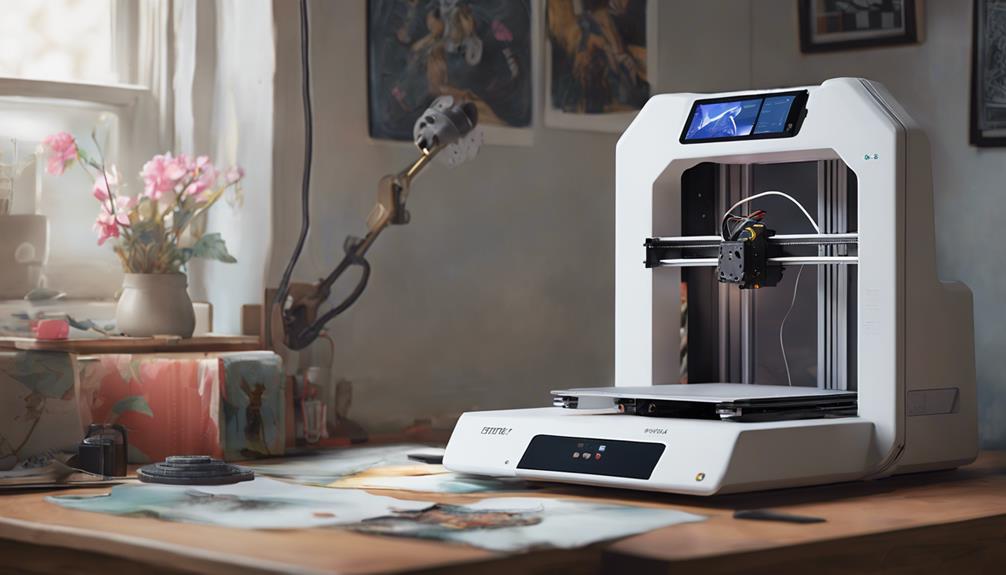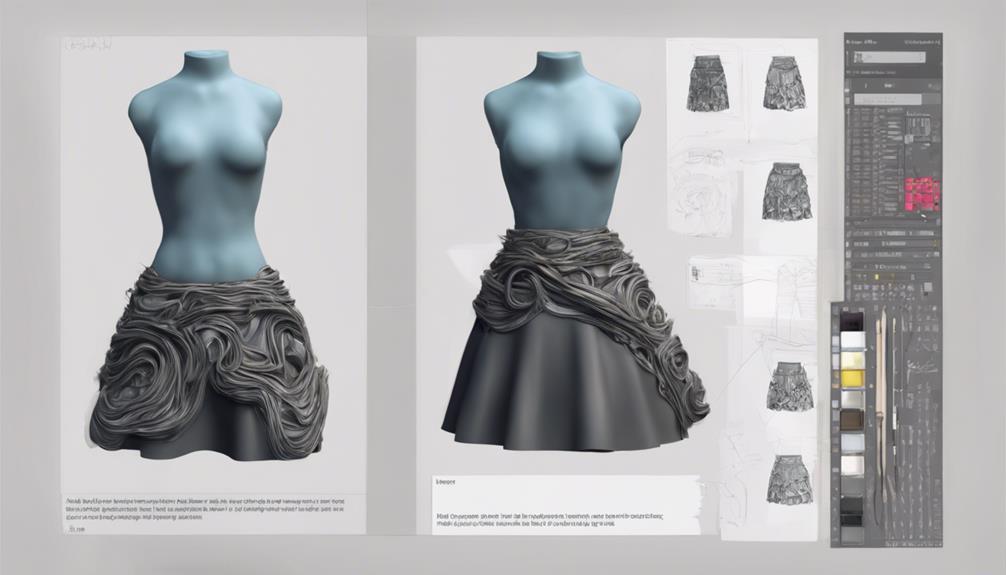When it comes to 3D printing, the choice between using a skirt or a priming line can impact the success of your prints more than you might think. While both serve similar purposes, there are distinct advantages and disadvantages to each. Understanding when and why you might opt for one over the other can make a significant difference in the quality of your final product. So, before you make your decision on which to use, considering the nuances of this debate could save you from potential printing mishaps.
Importance of Skirt and First Layer

Ensure a successful 3D print by understanding the essential role of the skirt and first layer in your printing process.
The skirt primes the extruder, ensuring proper plastic flow for the initial layer. It also acts as an early warning system, revealing any adhesion or leveling issues.
The first layer serves as the foundation for all subsequent layers, making leveling and adhesion critical for a flawless print. Neglecting proper adhesion can result in misalignment and print failure.
By paying attention to these critical components, you set yourself up for a smoother printing experience and higher quality prints.
Skirt Vs. Priming Line Debate
When deciding between using a skirt or a priming line in 3D printing, consider the key differences in their functions and benefits. The skirt is better for detecting adhesion and leveling issues compared to the priming line, which primarily primes the extruder similar to a skirt. It is recommended to disable the priming line if you opt to use a skirt for your prints. Additionally, alternatives such as a raft or brim can serve the same purpose as a skirt. Below is a table highlighting the variations between a skirt and a priming line:
| Skirt | Priming Line |
|---|---|
| Detects adhesion issues | Primes extruder similarly |
| Detects leveling problems | Primes extruder similarly |
| Helps prevent misalignment | Disabling recommended |
| Can be replaced with raft or brim | – |
Consequences of Skipping Skirt

Skipping the skirt in 3D printing can result in unprimed extruder, leading to errors in the initial layer printing process. Without the skirt, the extruder may not be properly primed, causing issues such as poor material flow and adhesion problems. This can result in a lack of proper leveling, leading to misaligned or failed prints.
The skirt is essential for detecting these issues early on, allowing you to make adjustments before starting the main print. While alternatives like a raft or brim can be used instead of a skirt, they may not offer the same level of priming and detection capabilities.
Ensuring the skirt is included in your printing process can help prevent common printing errors and improve overall print quality.
Activating Skirt Setting
To activate the Skirt Setting, make sure you access the printer's settings menu and locate the option for enabling the skirt feature. Activating this setting can greatly improve adhesion and stability during the printing process.
Typically, most slicer software comes with the skirt setting enabled by default. However, if you need to adjust the skirt parameters such as line count and distance, you might've to switch to expert mode in the software. In Cura, for instance, you can find the skirt setting under the 'Build Plate Adhesion' section.
Enabling the skirt feature can help prime the extruder, detect leveling issues, and ensure a smoother start to your prints.
Recommended Products and Author Information

For ideal guidance on 3D printing equipment and insights from author Martin Mayer, browse through the list of recommended products and author background information. Below is a table showcasing a selection of recommended products for beginners, intermediates, and experts in the 3D printing domain:
| User Level | Recommended Products | Description |
|---|---|---|
| Beginners | XYZprinting da Vinci Mini | Easy-to-use, affordable entry-level printer |
| Intermediates | Hatchbox PLA Filament | Reliable and versatile filament choice |
| Experts | E3D V6 Hotend Upgrade Kit | High-performance upgrade for advanced users |
Martin Mayer, a seasoned figure in the 3D printing community, offers valuable insights and recommendations based on his extensive experience in the field.
Frequently Asked Questions
Can a Skirt Be Used With a Raft or Brim for Better Adhesion?
Yes, you can use a skirt with a raft or brim for better adhesion. Adding a skirt alongside a raft or brim helps detect leveling and adhesion issues, ensuring proper material flow and preventing print misalignment.
What Should I Do if My Skirt Is Not Sticking to the Bed?
If your skirt is not sticking to the bed, make sure proper leveling and bed adhesion. Adjust skirt settings like line count and distance. Consider using a brim or raft as alternatives. Skipping skirt may lead to print errors.
Is It Necessary to Adjust Skirt Settings for Different Filaments?
Adjusting skirt settings for different filaments is essential. It guarantees proper adhesion and leveling, preventing print errors. Take time to optimize skirt settings for each filament. This small tweak can make a big difference in your prints' quality and success.
How Can I Prevent the Skirt From Interfering With the Print?
To prevent the skirt from interfering with the print, make sure proper adhesion and leveling. Adjust skirt settings for line count and distance in expert mode if needed. Skirt primes extruder, detects issues, and aids in successful initial layer printing.
Can a Skirt Be Used With Dual Extrusion Printers?
You can definitely use a skirt with dual extrusion printers! It's like having a trusty assistant getting everything in place before the big show. Skirt primes both extruders, ensuring a smooth start for your dual-color masterpiece.
Conclusion
To wrap up, when it comes to the debate between using a skirt or a priming line in 3D printing, it's like choosing between a lighthouse guiding a ship safely to shore or a compass pointing the way. Both serve their purpose, but the skirt stands out as a valuable tool for detecting potential issues early on.
So, next time you start a print job, consider activating that skirt setting to guarantee smooth sailing from start to finish.